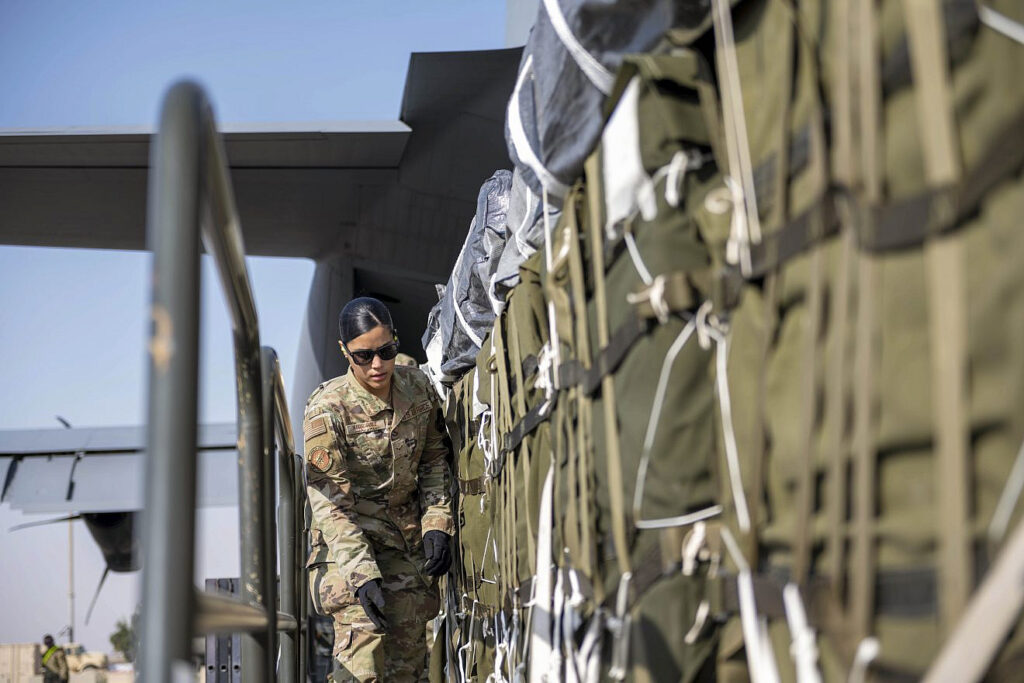
Audience
- Sentiment: Cautiously optimistic
- Political Group: Humanitarian advocates
- Age Group: Adults (likely 25-55)
- Gender: Both genders
Overview
- A ceasefire has allowed for the flow of humanitarian aid into Gaza, somewhat alleviating the risk of famine.
- Challenges remain as the threat of starvation could return if fighting resumes.
- The resilience of the Palestinian people is highlighted, emphasizing the need for continued international support.
Famine Averted in Gaza, But Risks Remain Amid Ceasefire
Imagine waking up one day and finding that you have no food, no shelter, and no safety. This is the daily reality for many people living in Gaza, a small territory located along the Mediterranean coast. Recently, there has been an important development regarding the humanitarian situation in Gaza, and it’s worth talking about. UN humanitarian chief Tom Fletcher visited Gaza and shared some hopeful news but also some serious warnings. Let’s dive deeper into these developments, understand what is happening, and why it matters.
On January 19, a ceasefire was announced that allowed for humanitarian aid to begin flowing into Gaza. Before this ceasefire, the people in Gaza faced unimaginable hardships. Continuous violence and conflict made it nearly impossible for aid workers to deliver food, medical supplies, and shelter to those who were desperately in need. The situation was dire, with over 2 million people facing starvation and a lack of basic necessities. However, since the ceasefire began, about 12,600 aid trucks have entered Gaza, carrying essential supplies such as food, water, and medical equipment.
This influx of aid is crucial for the people living in Gaza, who have endured extreme challenges. Families were being torn apart, homes were destroyed, and many people were displaced. With winter approaching, the need for warm shelters, winter clothing, and medical supplies is growing more urgent. Tom Fletcher’s visit aimed to assess the situation firsthand and report the condition of the people living there.
While Fletcher highlighted that famine has largely been averted, he didn’t shy away from the looming threats. He expressed concern that the threat of starvation could return quickly if the ceasefire were to collapse. This can happen at any time if negotiations fail, and fighting resumes. It’s crucial to understand that the ceasefire is not a permanent solution; it is more like a temporary pause in fighting that allows for aid to come in. The moment tensions flare up again, everything could fall apart, and the progress made could quickly vanish.
Fletcher painted a picture of devastation in northern Gaza. Buildings were in ruins, and essential infrastructure like hospitals and schools was damaged. The scars of violence and destruction are visible in the streets. Yet, Fletcher observed something remarkable: the resilience of the Palestinian people. Despite the anger and despair that many feel due to their situation, there is a strong spirit of determination among the people to rebuild and improve their lives. They are fighting against the odds, refusing to give in to hopelessness.
But rebuilding is not an easy task. It requires more than just the basic supplies and aid trucks; it demands sustained commitment from the international community. The global community has a critical role in ensuring that the flow of aid continues and that the needs of the people in Gaza are met. Without ongoing support, the danger of reverting back to a situation where people are hungry and homeless remains high.
As winter sets in, the urgency increases. Imagine living in a place where you couldn’t securely close your doors because there were no proper shelters, and where your family had little to no food to stay warm or even survive. The winter months introduce additional challenges—extreme cold, rain, and sometimes even snow, especially for those living in makeshift shelters or exposed areas. This makes the need for blankets, proper clothing, and adequate shelter even more critical.
Furthermore, the health conditions in Gaza are alarming. With hospitals overwhelmed and under-resourced, many people are struggling to receive the medical attention they need. Diseases can spread more easily in crowded makeshift shelters, where sanitation is often poor, and access to clean water is limited. Malnutrition during these times can severely affect children, the elderly, and the sick, who are already vulnerable and may not be able to fight off illnesses as effectively.
As we reflect on Tom Fletcher’s visit and the current situation in Gaza, we must remember that it’s not just about numbers—12,600 aid trucks or over 2 million affected people. Each number represents a life, a family struggling for a better tomorrow amidst the chaos and destruction. These families face uncertainty every day, unsure of where their next meal will come from or whether they will find shelter from the cold.
The determination shown by the people of Gaza is inspiring, and their stories need to be heard. Many have lost loved ones, homes, and communities but continue to push forward. They are not just statistics; they are mothers and fathers trying to care for their children, students wanting an education, and children dreaming of a better future.
As we talk about these serious issues, it’s important to engage with one another. So, I want to hear from all of you. What are your thoughts on this situation? Have you ever seen your community come together during tough times? What do you think can be done to help those who are suffering in Gaza and other parts of the world? Let’s share ideas and reflect on how we can all contribute to making the world a better place. Your voice matters, so leave a comment below and join the conversation!





